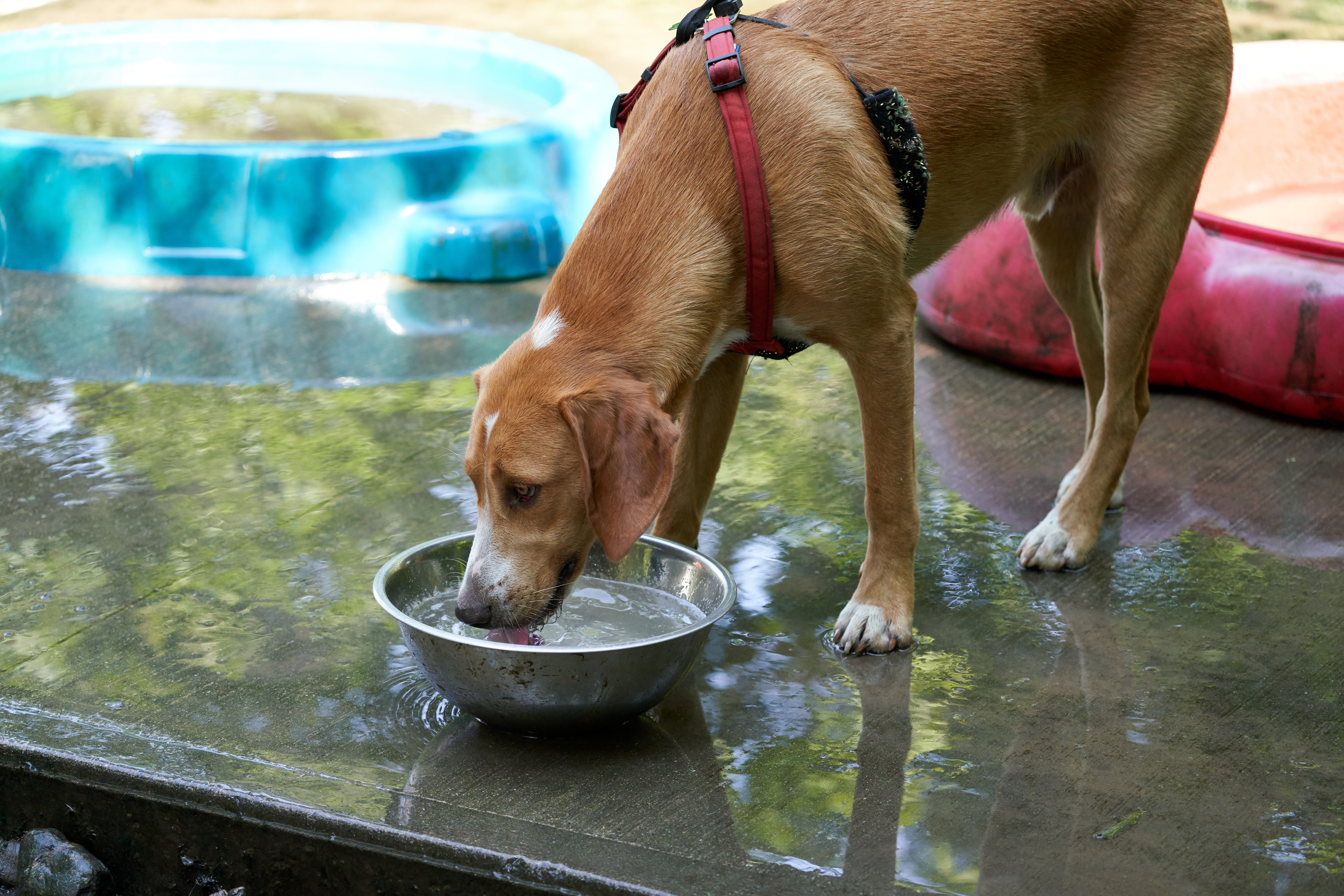
Welcome back to our quarterly blog series, Check Up with Blum! With each entry, we are discussing a topic about canine or feline health that affects your Chicago pet. Join us this month as we cover a new topic with Dr. Natalie Marks of Blum Animal Hospital and learn about how you can help keep your best friend healthy and happy in the big city!
This time on Check Up with Blum, we are talking about communal water bowls. As pet parents, we want to make sure our dog has the longest, healthiest, and happiest life possible. Read on to learn more about caring for your old furbaby!
First, in what types of situations are dogs at most risk of contracting diseases when sharing water from a communal bowl?
Dr. Marks states that dogs are most at risk of contracting a disease from ANY communal water bowl.Those could be at dog parks, restaurant or cafe patios, the dog beach, storefronts or even courtyards in condo buildings.
What causes a communal water bowl to become contaminated?
There are many factors that can cause a communal water bowl to become contaminated. Especially when left in the outdoor elements, rodents can come into contact with these communal water bowls. Rodents can urinate or defecate in these bowls leaving bacteria that is contagious to other dogs when ingested.
What types of diseases can be contracted from drinking out of a communal water bowl?
The two most common types of diseases transmitted to dogs from drinking out of contaminated communal water bowls are Giardia and Leptospirosis.
Let’s discuss, what is Giardia- what is it and what it does to a dog’s body?
Dr. Marks states that Giardia is a protozoan one-celled parasite of dogs, and it is incredibly common in Chicago. This parasite attaches itself to the intestinal wall and causes temporary damage to this organ. Although an infected dog can be asymptomatic (show no signs at all), most dogs will develop acute (sudden-onset) foul-smelling diarrhea. Dogs with Giardia have a stool that can range from soft to watery, often has a greenish tinge to it, and occasionally contains blood and/or mucus. Vomiting can occur in some cases as well. In chronic cases (over 3 weeks of infection), dogs can have gradual weight loss, lethargy, or a fever.
Now let’s discuss, what is Leptospirosis- what is it and what it does to a dog’s body?
Dr. Marks defines Leptospirosis is a spirochete bacterium that causes disease worldwide. Recently, Chicago has had an uptick of this disease in the dog population in the city. The bacteria, once in the body, takes up residence in the liver and/or kidneys. While some dogs develop an infection with very mild clinical signs, most start to show disease through vomiting, diarrhea, lack of appetite, weakness and/or depression. As the disease progresses, dogs may have a fever, pale mucus membranes, fast heart rate, low platelet count (clotting cells), and in severe cases, this disease can be fatal.
What are some of the signs and symptoms I should look out for if my dog drank from a contaminated water bowl?
The most common signs of Giardia are:
- Diarrhea (with or without blood).
- Decreased appetite, vomiting and/or lethargy.
The most common signs of Leptospirosis are:
- Lethargy, fever, increased thirst, and urination
- Decreased appetite and or lack of appetite, vomiting, diarrhea.
Can any of these diseases be transmitted to humans from a dog?
Yes, Leptospirosis is the most common infectious zoonotic disease worldwide meaning that it is transmissible from dogs to humans.
Is Leptospirosis only prevalent in the late summer/early fall?
Leptospirosis requires a contaminated water source to harbor the bacteria for transfer, and this is typically when the weather is more conducive to temperature and rain. However, Leptospirosis is now considered a year-round disease.
To learn more about how to treat and prevent Giardia and Leptospirosis, two very communicable illnesses for your dog that are common in the city of Chicago, check out our previous Check Up With Blum: Giardia and Leptospirosis in Chicago blog post!
What should I do if my dog shows signs of being ill from drinking from a contaminated water bowl?
If your dog is experiencing any of the signs of being ill mentioned above, make sure to see your veterinarian for an exam and a diagnostic testing.
How often should I clean my dog’s water bowl to avoid a bacterial infection? What is the best method and does the material of a water bowl make a difference?
Dog bowls should ideally be washed daily with warm soap and water or through the dishwasher on a hot cycle. The easiest bowls to clean and keep clean are stainless steel bowls. Plastic bowls should be avoided whenever possible because cracks from deterioration can harbor bacteria.
What is the best way to prevent your dog from contracting diseases from communal water bowls while still keeping them hydrated?
Dr. Marks recommends that it is best to bring your own collapsible water bowl and source of fresh water when out with your dog in communal settings for a longer period of time.
Thank you to Dr. Natalie Marks at Blum Animal Hospital for her insight into dogs drinking from communal water bowls and best practices to keep your dog safe and healthy. We appreciate her hard work in making sure that every Chicago pet has the best life possible!
Blum Animal Hospital is located at 3219 N. Clark Street and has been caring for Chicago’s pets since 1952. They have been accredited by the American Animal Hospital Association (AAHA) since 1972. To learn more about Blum, their Fear Free certification and the calming techniques they use, check out their website!
Windy City Paws is a Chicago dog walker and petsitter committed to providing helpful information to Chicago dog and cat owners through its blog.
